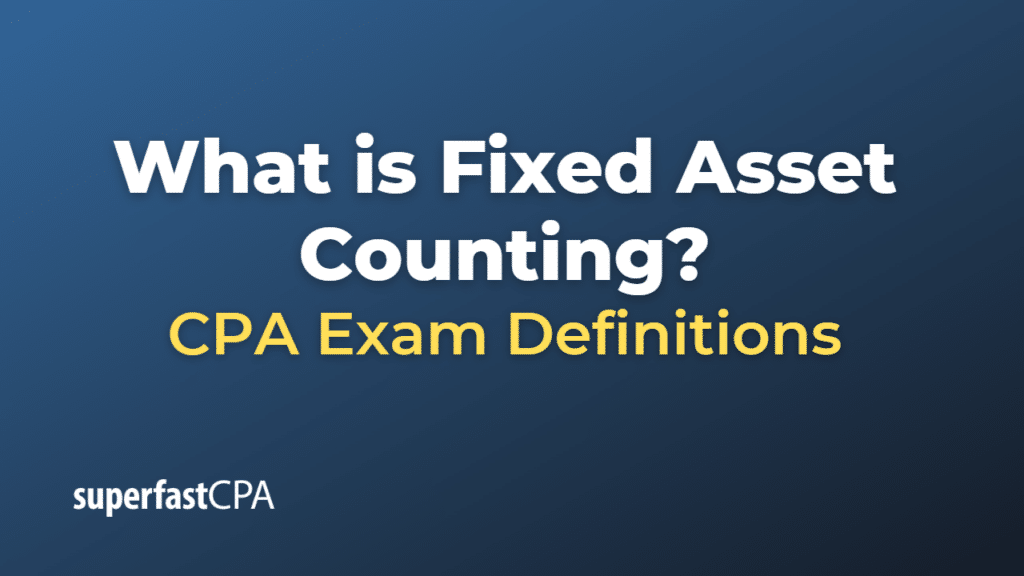Fixed Asset Counting
Fixed Asset Counting, also known as a physical inventory count or fixed asset verification, is the process of physically counting and verifying the existence and condition of all of a company’s fixed assets. This is usually done by comparing the actual count and condition of the assets with the records in the company’s fixed asset register.
During a fixed asset count, each asset is usually identified by a unique tag or barcode that corresponds with the records in the fixed asset register. The count involves checking the location, quantity, and condition of each asset and ensuring that these match the details recorded in the register. If any discrepancies are found, these are investigated and the register is updated if necessary.
Fixed asset counting is an important part of a company’s internal control procedures. It helps to ensure the accuracy of the company’s financial statements, as the value of fixed assets is a significant part of a company’s balance sheet. Regular fixed asset counts can also help to detect and prevent theft or misuse of assets.
Fixed asset counts are usually performed at least once a year, often at the end of the fiscal year. However, companies with a large number of fixed assets or those in industries where assets are more prone to theft or loss may choose to do counts more frequently.
Example of Fixed Asset Counting
Let’s consider a hypothetical example of a company named “ConstructCo,” which is a construction company with a large number of fixed assets, such as heavy machinery, vehicles, and tools. Here’s how a fixed asset count might be carried out at ConstructCo:
- Plan the Count: ConstructCo’s management decides to perform the fixed asset count at the end of the fiscal year. They create a schedule for the count and assign teams to count assets at each of the company’s locations.
- Prepare the Fixed Asset Register: Prior to the count, ConstructCo ensures that its fixed asset register is up to date. The register lists all of the company’s fixed assets, along with details like the asset’s identifier, description, location, acquisition date, cost, accumulated depreciation, and net book value.
- Perform the Count: The counting teams physically inspect each of ConstructCo’s assets, verifying its existence, location, and condition. They check each asset’s unique identifier against the fixed asset register.
- Reconcile and Investigate: After the count, the results are compared with the fixed asset register. Any discrepancies, such as missing assets or assets that are in a different location or condition than expected, are investigated. For instance, if a piece of machinery is not found, the team would first check if it’s being repaired, lent out, or relocated before concluding it’s missing.
- Update the Register: If the investigation reveals that the fixed asset register is incorrect or outdated (for example, an asset has been disposed of but not removed from the register), the register is updated to reflect the accurate details. If an asset is found to be missing and cannot be located, this might also trigger a review of security procedures to prevent future losses.
Through this process, ConstructCo ensures that it has accurate records of its fixed assets, which is crucial for financial reporting, asset management, and loss prevention.













